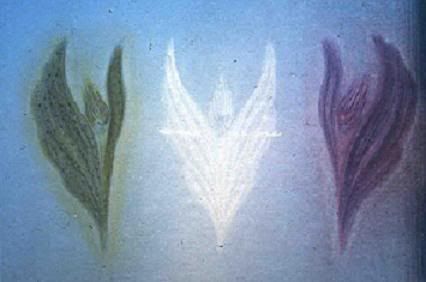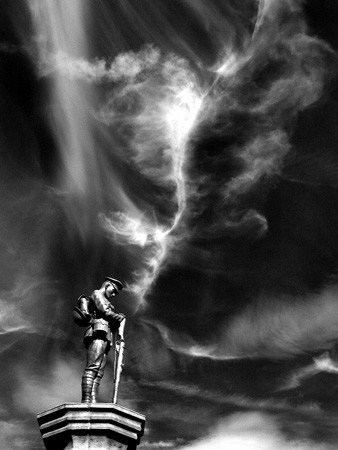
Classical representations of Air Elementals aka Sylphs




Photos by Lilly in Las Vegas , Oct. 16, 2006 above a gifted area.


Bird Sylph?
Photo by Alejandro in Chile , March 2007 above a gifted area.

Under Construction
See Fact Sheet: Open Skies Treaty: First Russian Observation in the United States
Origin and Purpose
The Treaty on Open Skies entered into force on January 1, 2002, and currently has 30 States Parties. The Treaty establishes a regime of unarmed aerial observation flights over the entire territory of its participants. The Treaty is designed to enhance mutual understanding and confidence by giving all participants, regardless of size, a direct role in gathering information about military forces and activities of concern to them. Open Skies is one of the most wide-ranging international efforts to date to promote openness and transparency of military forces and activities. The original concept of mutual aerial observation was proposed by President Eisenhower in 1955; the Treaty itself was an initiative of President George H.W. Bush in 1989. The Treaty was negotiated by the then-members of NATO and the Warsaw Pact, and was signed in Helsinki, Finland, on March 24, 1992. The United States ratified it in 1993. This Treaty is not related to civil-aviation open skies agreements.
Membership
The 30 States Parties to the Open Skies Treaty are: Belarus, Belgium, Bosnia-Herzegovina, Bulgaria, Canada, Czech Republic, Denmark, Finland, France, Georgia, Germany, Greece, Hungary, Iceland, Italy, Latvia, Luxembourg, Netherlands, Norway, Poland, Portugal, Romania, Russian Federation, Slovak Republic, Spain, Sweden, Turkey, United Kingdom, Ukraine, and United States. Kyrgyzstan has signed but not yet ratified. The Treaty depositaries are Canada and Hungary.
The Treaty is of unlimited duration and open to accession by other States. States of the former Soviet Union that have not already become States Parties to the Treaty may accede to it at any time. Applications from other interested States are subject to a consensus decision by the Open Skies Consultative Commission (OSCC), the Vienna-based organization charged with facilitating implementation of the Treaty, to which all States Parties belong. Four states have acceded to the Treaty since entry into force: Finland, Sweden, Latvia, and Bosnia-Herzegovina. The OSCC has also approved applications for accession by Lithuania, Estonia, Slovenia, and Croatia. Croatia ratified the Treaty but has not yet deposited its instrument of ratification. Cyprus’s application for accession is pending before the OSCC.
Basic Elements of the Treaty
Territory. The Open Skies regime covers the territory over which the State Party exercises sovereignty, including land, islands, and internal and territorial waters. The Treaty specifies that the entire territory of a State Party is open to observation. Observation flights may only be restricted for reasons of flight safety; not for reasons of national security.
Aircraft. Observation aircraft may be provided by either the observing Party or (the "taxi option") by the observed Party, at the latter's choice. All Open Skies aircraft and sensors must pass specific certification and pre-flight inspection procedures to ensure that they are compliant with Treaty standards. The official certified U.S. Open Skies aircraft is the OC-135B (a military version of the Boeing 707).
Sensors. Open Skies aircraft may have video, optical, panoramic and framing cameras for daylight photography, infra-red line scanners for a day/night capability, and synthetic aperture radar for a day/night, all weather capability. Photographic image quality will permit recognition of major military equipment (e.g., permit a State Party to distinguish between a tank and a truck), thus allowing significant transparency of military forces and activities. Sensor categories may be added and capabilities improved by agreement among States Parties. All equipment used in Open Skies must be commercially available to all participants in the regime.
Quotas. Each State Party is obligated to receive observation flights per its passive quota allocation. Each State Party may conduct as many observation flights -- its active quota -- as its passive quota. During the first 3 years after EIF, each State will be obliged to accept no more than 75% of its passive quota. Since the overall annual passive quota for the United States is 42, this means that it will be obligated to accept no more than 31 observation flights a year during this 3-year period. Only two flights were requested over the United States during 2004, by the Russian Federation and Republic of Belarus Group of States Parties (which functions as a single entity for quota allocation purposes). The United States is entitled to 8 of the 31 annual flights available over Russia/Belarus. Additionally, the United States is entitled to one flight over Ukraine, which we share with Canada.
Data Sharing/Availability. Imagery collected from Open Skies missions is available to any State Party upon request for the cost of reproduction. As a result, the data available to each State Party is much greater than that which it can collect itself under the Treaty quota system.
Implementation of the Treaty
Provisional application of portions of the Treaty took place from signature in 1992 until entry into force in 2002. During that period, participants conducted joint trial flights for the purpose of training flight crews and testing equipment and sensors. With entry into force of the Treaty, formal observation flights began in August 2002. During the first Treaty year, States Parties conducted 67 observation flights. For 2004, States Parties have planned 82 missions. The OSCC continues to address modalities for conducting observation missions and other implementation issues.
Since the signature of the Open Skies Treaty in 1992, the security environment in Europe has changed significantly. The Open Skies Treaty continues to contribute toward European security by enhancing openness and transparency among the Parties. For further information please see www.state.gov/t/ac.